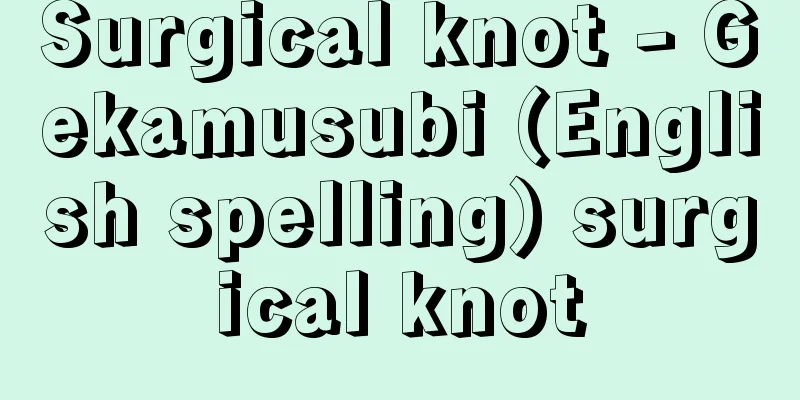Surgical knot - Gekamusubi (English spelling) surgical knot

|
This is a ligation method. The thread is passed through the first loop twice, and then tied again on top of that. By passing the thread twice, the friction surface between the threads is increased, making it less likely to come loose and thus allowing for a more reliable ligation. This method is particularly popular in surgery to ensure hemostasis and suturing, hence the name (Figure). [Ono Mikiko] Source: Heibonsha World Encyclopedia, 2nd Edition Information |
|
結紮(けつさつ)法の一つ。最初の輪に糸を2度くぐらせてから,改めてその上で糸を結ぶ方法。2度くぐらせることにより糸どうしの摩擦面が大きくなり,緩みにくく,したがって確実な結紮ができる。とくに外科領域で止血や縫合を確実にするために好んで用いられることから,この名称がついた(図)。【小野 美貴子】
出典 株式会社平凡社世界大百科事典 第2版について 情報 |
Recommend
Sad Wolf Spider - Sad Wolf Spider
…Other spiders, such as the grass spider Agelena ...
Gold Value Clause - Kinkachi Yakkan
...A clause in a monetary credit contract that pr...
Naruszewicz, A. (English spelling) NaruszewiczA
...The name "Piast" appears in the Chro...
Hepatoma
...Another unique primary malignant tumor is hepa...
Gallo-Romance language - Gallo-Romance language
Vulgar Latin was used in Gaul, which became part o...
Valsalva, AM
…An Italian physician. After graduating from the ...
Brezovački, T.
...However, it was not until the 19th century tha...
Bornite - Bornite
A copper sulfide mineral. It is formed as a secon...
American sennou - American sennou
A perennial plant of the Caryophyllaceae family (...
Chalcedonian Church - Chalcedonian Church
…In 410, just before the writing of this book, Ro...
Hylobates lar (English spelling) Hylobateslar
...Also called Gibbon. Widely distributed through...
Nogai people - Nogai (English spelling)
An ethnic group that lives mainly in the Republic ...
Personality (English spelling)
It is synonymous with personality, character, and ...
Goal Language - Goal
A dead language belonging to the Celtic branch of ...
Carpinus
...A deciduous tall tree of the birch family that...









